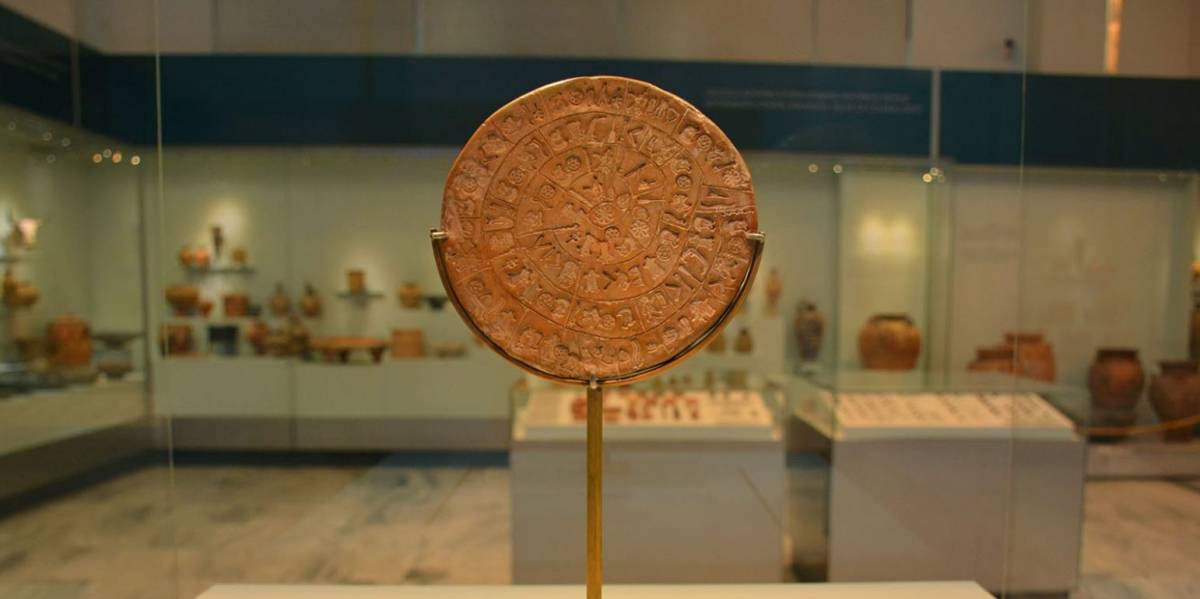
The Archaeological Museum of Heraklion is one of the most important Museums in Greece and Europe, in general. In the 12 out of its 27 rooms, it houses the largest collection with Minoan Antiquities. The Minoan Art is presented through thousands of exhibits and masterpieces. Some of them, figurines, jewelry, tablets and murals are world famous.
The Snake Goddesses, about 30 centimeters high, were made of painted faience in the 16th century BC. The female figures they represent were deities and symbolized fertility. They wear elaborate Minoan garments with long skirts, pleated and woven aprons, and a narrow bodice that leaves the chest bare. The smaller, in size, Snake Goddess, holds snakes in her outstretched arms and the bigger one has snakes coiling around her body and hat.
The stone bull’s head rhyton, 25 cm wide, was a ritual vessel used in libations. It impresses with its anatomical details and expressiveness. The vessel is not preserved as a whole, only the left side of the head, while its horns were not found, they must have been wooden or gilded.
The gold Bee Pendant dates back to the 18th and 17th centuries BC. and all the advanced technologies of the time were used for its construction. This is a beautiful jewel with two bees facing each other. On their head, there is a small round cage enclosing a golden ball, and from the wings and abdomen of the bees three, round, honeycomb-like tablets hung.
The Hagia Triada Sarcophagus is an inscribed limestone altar from 1200 BC. It is 137 cm long and depicts a sacrificial ceremony of the pre-Homeric world giving us a lot of information about the burial customs of the Nobles during Mycenaean rule.
Linear B was the first writing of the Greek Language and was used from the 17th to the 13th century BC. It included 89 syllabary (syllables), 260 ideograms (meanings such as man, woman, oil) and numerical symbols. The clay tablets with linear B, found in Knossos in 1902 and exhibited in the Archaeological Museum of Heraklion, concerned administrative needs, economic, legal and religious matters. The Discus of Phaistos, a disc of baked clay, 15 cm in diameter, discovered in South Crete in 1908, is a great mystery and perhaps the best-known exhibit in the Museum, as it has not yet been deciphered. On its two sides are 45 different symbols, people, fish, etc. arranged spirally.
The Prince with the Lilies, the most famous Minoan fresco depicts a life-size young man wearing a colorful belt and a majestic crown with lilies and peacock feathers. The 16th century fresco of bull-leaping was discovered in Knossos. Bull-leaping was a sport of the Minoan era where the athlete performed acrobatic jumps on a bull.
(More articles about Crete on www.gomega.gr)